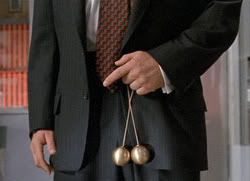But what about the people who don't already go to the Gumbo Shop on a semi-regular basis? On the vast Internets, there are plenty of opportunities for one to come across your business online.
Search Engines
There are different ways you can try to ensure that your business shows up for a given search. At the very least, however, you should be ensuring that the information is up-to-date and spend some time to add some media such as pics. These guys are increasingly conglomerating more data from other websites as well to try to give as much information to people as possible. Therefore, checking out search results for your business will show you what other sites people may come across as they're searching more generic terms like "Cajun" or "Fried Catfish."
Business Listing Websites
Speaking of websites that people may come across before they hit your business's website or Facebook page, there is a plethora of websites that index data from databases and allow users to update data and provide whatever information may be applicable to a business. For restaurants in particular, there is an insane amount of Menu sites (SinglePlatform being a more recent one), review sites, or just meta sites collecting all that stuff together.
 |
| http://www.penny-arcade.com |
Same with the search engines, keeping this data up-to-date is the least you should do. Going all out on Yelp.com, however, means putting your own personal self out there to interact with those pesky Yelpers, but that's another post.
Online Advertising
Finally, what is perhaps the most obvious, is online advertising. According to emarketer.com, Google has an almost 50% market share, where Facebook has below 10%. So what would make one choose to advertise on Facebook than on Google?
 |
| http://www.the-cynic.com |
NEXT TIME, I'll finally talk about the thoughts that went into putting up my first Facebook Ad for the Gumbo Shop and talk about its performance.








